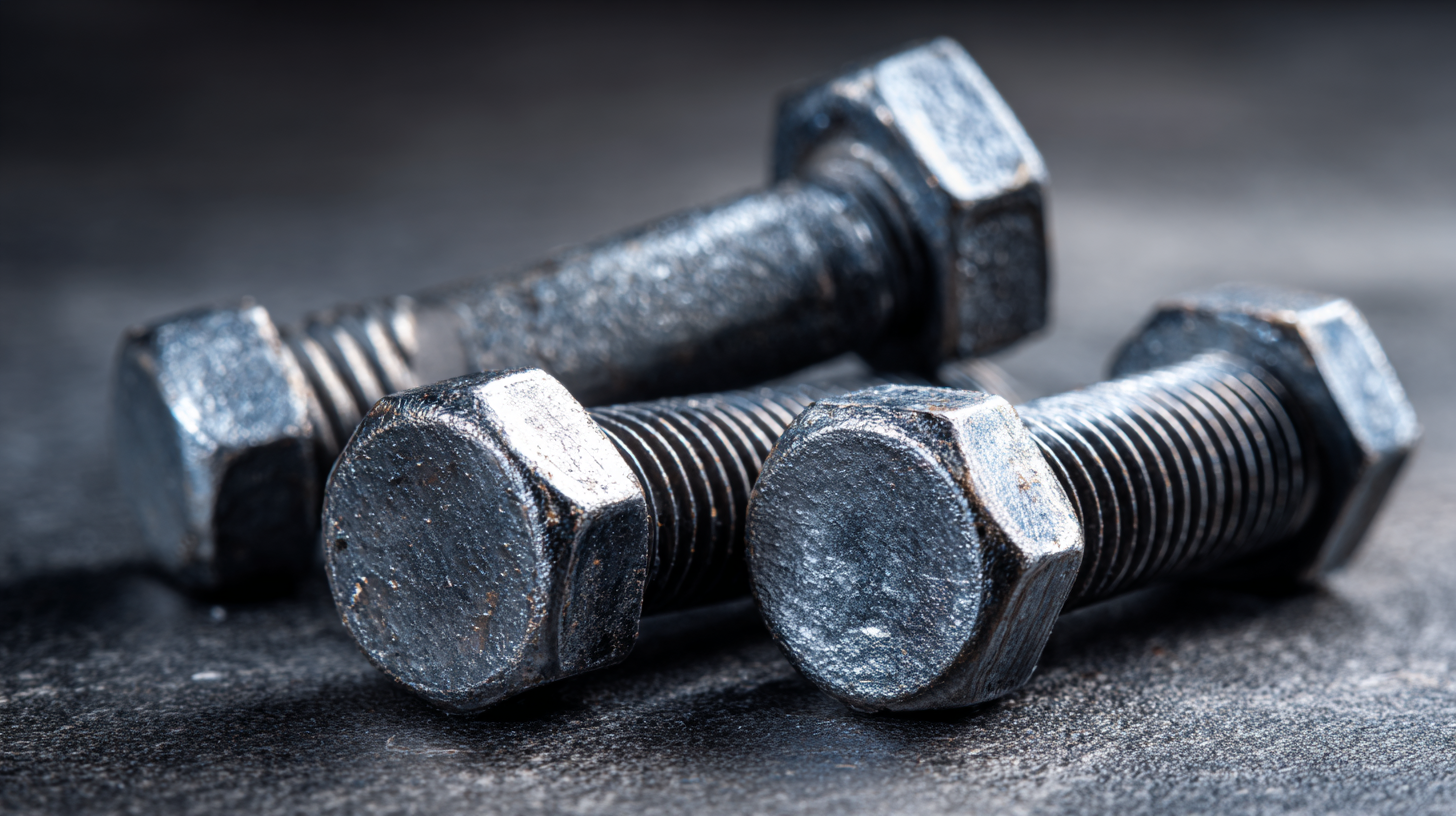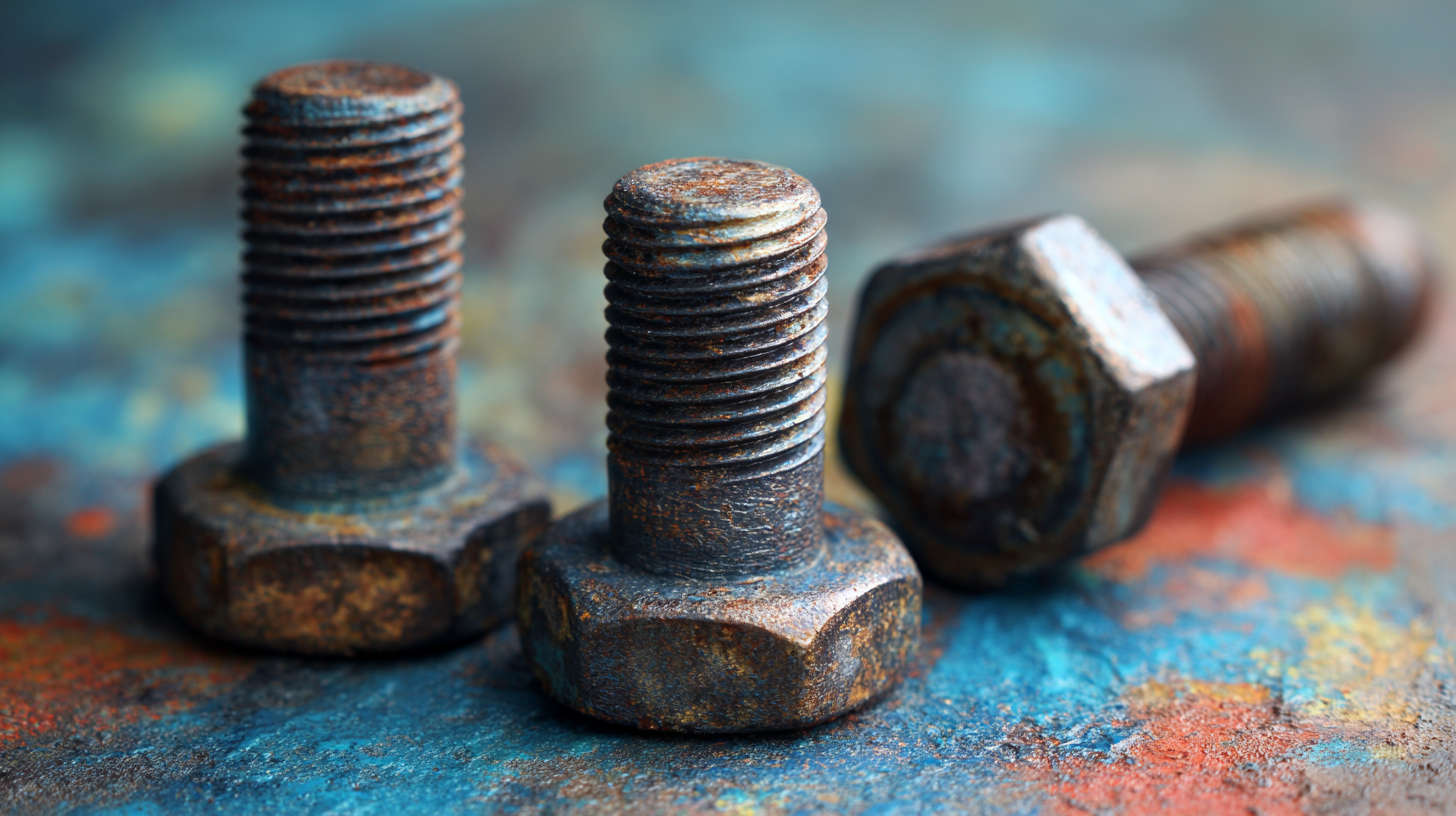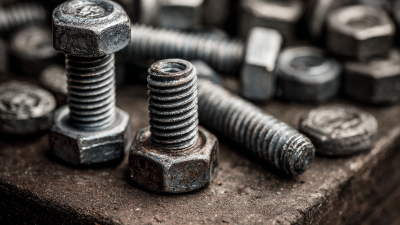Exploring Button Head Bolts: The Unsung Heroes of Modern Engineering Applications
 In the realm of engineering applications, fasteners play a pivotal role in ensuring structural integrity and performance. Among these, Button Head Bolts have emerged as an essential component, often overlooked in discussions surrounding bolting solutions. Their unique design, characterized by a rounded head and a wide bearing surface, provides enhanced load distribution and torque capabilities, making them ideal for a variety of industrial applications. According to a report by the Global Fasteners Market, the demand for specialized fasteners, including Button Head Bolts, is projected to grow at a CAGR of 4.2% from 2021 to 2026, driven by advancements in construction and manufacturing technologies.
In the realm of engineering applications, fasteners play a pivotal role in ensuring structural integrity and performance. Among these, Button Head Bolts have emerged as an essential component, often overlooked in discussions surrounding bolting solutions. Their unique design, characterized by a rounded head and a wide bearing surface, provides enhanced load distribution and torque capabilities, making them ideal for a variety of industrial applications. According to a report by the Global Fasteners Market, the demand for specialized fasteners, including Button Head Bolts, is projected to grow at a CAGR of 4.2% from 2021 to 2026, driven by advancements in construction and manufacturing technologies.
The versatility of Button Head Bolts is evidenced in sectors such as automotive, aerospace, and construction, where they are utilized in assembling machinery and securing components. A study conducted by the International Fastener Association indicates that approximately 30% of fastener-related failures can be traced back to poor selection or improper usage, underscoring the critical importance of choosing the right fastener for specific applications. By exploring the innovative design and functional benefits of Button Head Bolts, engineers can significantly enhance the safety, efficiency, and longevity of their projects. This article aims to delve into the various engineering applications of Button Head Bolts, showcasing their significance as the unsung heroes of modern engineering solutions.
Understanding Button Head Bolts: Design and Functionality
Button head bolts are a unique fastener type, distinguished by their semi-spherical heads, which provide various advantages in engineering applications. Their design allows for an increased surface area, distributing load more evenly and minimizing stress concentration. This attribute is particularly beneficial in scenarios where structural integrity is paramount, such as in machinery and framework assemblies. The lower profile of the button head also facilitates ease of access, which is vital in spaces where traditional fasteners may be challenging to install or remove.
In terms of functionality, button head bolts are engineered for both strength and versatility. They are commonly made from high-strength materials like stainless steel, ensuring durability in diverse environments, including those exposed to moisture or corrosive elements. Additionally, their unique shape enhances the bolt's resistance to stripping, an essential feature for maintaining secure connections. The ability to accommodate various driving methods, such as Allen or Torx, further illustrates their adaptability across different engineering applications, making them an unsung hero in the realm of modern construction and manufacturing.

Key Advantages of Using Button Head Bolts in Engineering
Button head bolts have emerged as integral components in modern engineering, offering distinct advantages that enhance the reliability and effectiveness of various applications. One key benefit is their low profile, which minimizes interference with surrounding components, thereby allowing for tighter assembly designs. According to a report by the Fastener Technology International, button head bolts can save up to 30% in space compared to traditional fasteners, which is vital in industries where every millimeter counts, such as aerospace and automotive engineering.
Another significant advantage is their superior load distribution capability. The rounded head design helps distribute stresses over a larger area, significantly reducing the risk of failure under extreme conditions. A study published in the Journal of Engineering Materials and Technology highlights that button head bolts can endure shear forces up to 25% more effectively than standard bolts, making them ideal for dynamic applications where durability is paramount. Moreover, their compatibility with various materials and coatings allows for enhanced corrosion resistance, contributing to longer lifespans in challenging environments. This combination of strengths positions button head bolts as truly unsung heroes in today's engineering landscape.
Applications of Button Head Bolts in Various Industries
Button head bolts may not always be in the spotlight, but they play a critical role across numerous industries, from construction to automotive engineering. Their unique design, characterized by a rounded head and a short shank, provides both aesthetic appeal and practical functionality. In automotive applications, button head bolts are commonly used to secure components within engines and chassis, where their compact size allows for easy access and reduces the risk of snagging or damage during assembly and maintenance.
In the construction sector, button head bolts are utilized in structural applications requiring a durable and reliable fastening solution. Their resistance to corrosion makes them ideal for outdoor use and in environments where exposure to moisture occurs. Additionally, industries such as electronics and furniture manufacturing also leverage the advantages of button head bolts due to their neat appearance and ability to distribute loads more evenly, which can enhance the longevity of assembled products.
**Tip:** When selecting button head bolts for a project, always consider the material and finish to ensure compatibility with your application’s environment. Additionally, using the right torque specifications during installation is crucial to maintaining the integrity and performance of the assembly.
Exploring Button Head Bolts: The Unsung Heroes of Modern Engineering Applications
| Industry | Application | Material Used | Size Range (mm) | Key Features |
|---|---|---|---|---|
| Automotive | Engine Assembly | Steel | 8 - 20 | Corrosion-resistant, high strength |
| Aerospace | Aircraft Structural Components | Titanium | 4 - 12 | Lightweight, high tensile strength |
| Construction | Structural Framework | Stainless Steel | 10 - 30 | Weather-resistant, robust |
| Electronics | Device Assembly | Aluminum | 3 - 10 | Excellent conductivity, lightweight |
| Marine | Boat Hull Construction | Bronze | 5 - 15 | Corrosion-resistant, strong |
Installation and Maintenance Tips for Button Head Bolts
 When it comes to installing button head bolts, several essential tips can ensure a successful outcome. First, it is crucial to select the right size and material for the application. Button head bolts come in various grades, and choosing one that matches the working environment—be it corrosive, high-temperature, or high-stress—is vital for long-term performance. Additionally, it is important to ensure that the bolt fits snugly into the intended hole to prevent any looseness that can lead to mechanical failure.
When it comes to installing button head bolts, several essential tips can ensure a successful outcome. First, it is crucial to select the right size and material for the application. Button head bolts come in various grades, and choosing one that matches the working environment—be it corrosive, high-temperature, or high-stress—is vital for long-term performance. Additionally, it is important to ensure that the bolt fits snugly into the intended hole to prevent any looseness that can lead to mechanical failure.
Maintenance of button head bolts should not be overlooked, as regular checks can extend their lifespan significantly. Inspect bolts periodically for signs of wear, corrosion, or deformation. It is advisable to retighten bolts after installation, as they can loosen due to thermal expansion or vibration over time. Utilizing a thread-locking compound can help maintain torque levels and prevent unintentional loosening. By following these installation and maintenance tips, users can enhance the reliability and effectiveness of button head bolts in their engineering applications.
Selecting the Right Button Head Bolt for Your Project
When selecting the right button head bolt for your project, understanding the unique characteristics of this fastener is crucial.
Button head bolts are designed with a rounded, dome-shaped head that provides a larger bearing surface, making them ideal for applications where a smooth finish is desired. These bolts are commonly used in machinery, automotive parts, and architectural applications due to their strength and aesthetic appeal.
Tips: Before purchasing button head bolts, consider the material you need based on your project's requirements. Stainless steel offers excellent corrosion resistance, while carbon steel provides strength for heavy-duty applications. Additionally, ensure you verify the size and thread pitch to avoid compatibility issues with your existing hardware.
Another important factor is the installation process. Make sure you have the right tools on hand—a proper impact driver can significantly ease the fastening of larger bolts. For those new to using button head bolts, practicing with a few spare ones can help build your confidence and ensure a secure installation on your main project.
Related Posts
-

Understanding the Importance of Carriage Bolt Selection in Construction Projects
-

5 Essential Tips for Choosing the Right Truss Head Carriage Bolt for Your Project
-

7 Tips for Choosing the Right Button Head Bolt for Your Project
-

The Ultimate Guide to Choosing the Right Furniture Screw for Your Projects
-

Understanding the Versatility of Carriage Bolts: Essential Guide for DIY Enthusiasts
-

Ultimate Guide to Choosing the Right Hot Sale Carriage Bolt for Your Projects
